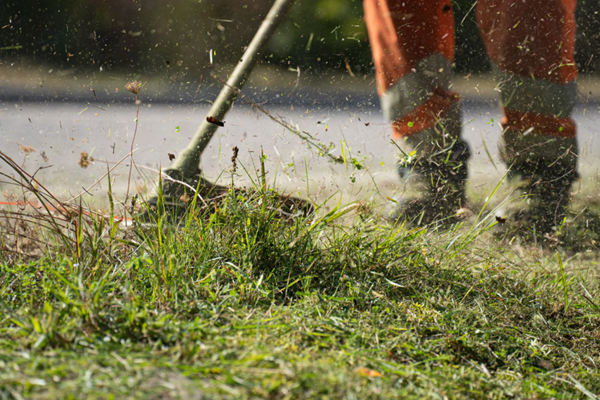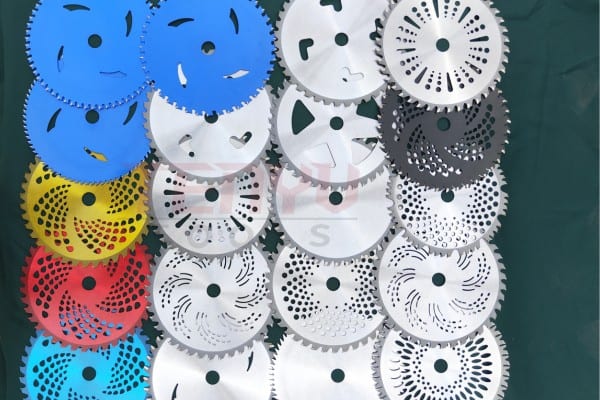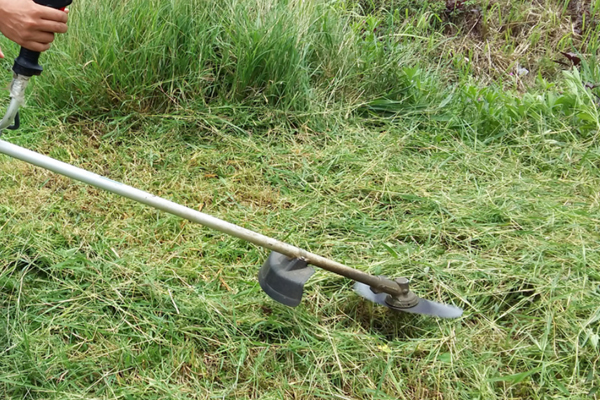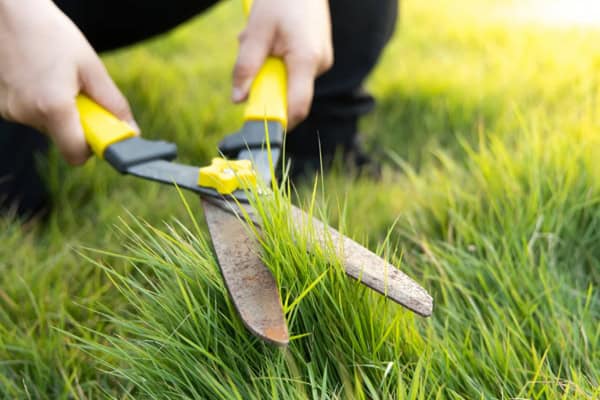Tired of struggling with different grass types and sizes? Choosing the right blade size and shape makes all the difference in cutting efficiency.
The best brush cutter depends on your grass conditions. For most homeowners, a 10-inch circular blade works well for general lawn care, while larger 14-16 inch rectangular blades handle tougher brush and thicker grass.

Matching blade size and shape to your specific needs is crucial. Let’s examine how different blade configurations perform in various situations.
What is the Best Blade Size for Cutting Grass?
Ever wonder why some landscapers use different size blades? The size directly impacts cutting efficiency and power requirements.
For regular lawn maintenance, 10-inch circular blades offer the best balance. Larger 12-16 inch blades are better for tall grass and brush clearing, while rectangular blades provide superior cutting width for open areas.

Blade Size Performance Chart
| Diameter | Best For | Power Needed | Cutting Width |
|---|---|---|---|
| 10-inch | Residential lawns | Low | 8-9 inches |
| 12-inch | Thicker grass | Medium | 10-11 inches |
| 14-inch | Brush clearing | High | 12-13 inches |
| 16-inch | Commercial use | Very High | 14-15 inches |
At our factory, we’ve found circular blades1 between 10-12 inches work best for most residential applications. The round shape provides even cutting and better balance. For larger 14-16 inch blades, we reinforce the center mounting area to prevent vibrations during operation. The rectangular blades2 we make (called "knife blades3") feature tempered edges that stay sharp longer when cutting tough vegetation.
What are the Different Blade Shapes and Their Uses?
Not all cutting tasks require the same blade shape. The geometry affects how effectively the blade cuts different materials.
Circular blades excel at precision cutting and grass mulching, while rectangular knife blades cover more area and handle tougher brush. Some specialty blades combine both shapes for versatile performance.

Shape Comparison and Applications
| Shape | Advantages | Best Uses | Material |
|---|---|---|---|
| Circular | Even cut, better balance | Lawns, fine grass | Steel alloy |
| Rectangular | Wider cut, more power | Brush, thick grass | Carbide-tipped |
| Serrated | Stays sharp longer | Woody plants | Hardened steel |
| Multi-cut | Combined shapes | Versatile use | Composite |
Our production data shows rectangular blades4 maintain cutting efficiency 15% longer in dense vegetation. We make these with a slight curvature (2-3 degree bend) to improve grass lifting action5. For extreme conditions, we offer hybrid blades6 that combine a circular center section with rectangular cutting extensions – giving both precision and width.
What Blade Size Works Best for Thick Grass?
Ever tried cutting thick grass with the wrong blade size? It’s frustrating and can damage your equipment.
For thick grass and light brush, 14-inch blades provide the best combination of cutting power and maneuverability. The extra size handles tough vegetation without being too heavy to control.

Thick Grass Cutting Performance
- 10-inch blades – Struggle with dense growth, require multiple passes
- 12-inch blades – Better but may still bog down
- 14-inch blades – Ideal balance of power and control
- 16-inch blades – Powerful but harder to handle for most users
Our thick-grass blades feature special venting holes that reduce wind resistance and prevent grass buildup. The 14-inch models we manufacture have 25% more cutting teeth7 than standard blades to handle the increased workload. Field tests show they cut through 1-inch diameter brush stems8 cleanly without stalling the motor.
How Does Blade Size Affect Cutting Performance?
Using the wrong size blade doesn’t just make the job harder – it can actually damage your equipment and lawn.
Oversized blades strain the motor and increase vibration, while undersized blades require more passes and leave uncut patches. Matching size to your engine power is critical for best results.
Size vs Performance Factors
| Size Issue | Motor Effect | Cutting Result | User Impact |
|---|---|---|---|
| Too large | Overheats | Uneven cuts | Fatigue |
| Too small | Overworks | Missed spots | Time wasted |
| Correct size | Smooth operation | Clean cuts | Efficient work |
Our engineering team has developed blade size recommendations based on engine horsepower. For example:
- 25-35cc engines: 10-inch max
- 35-45cc engines: 12-inch max
- 45cc+ engines: 14-16 inch blades
The rectangular blades we produce for commercial use have weight-reduction cutouts9 that maintain strength10 while improving balance. This allows use of larger sizes without compromising control.
Conclusion
Choosing the correct blade size (10-16 inch) and shape (circular or rectangular) for your specific grass conditions ensures efficient, professional-quality results while protecting your equipment.
-
Explore this link to discover top-rated circular blades that enhance cutting efficiency and balance for home projects. ↩
-
Learn about the benefits of rectangular blades, especially for tough vegetation, and how they outperform traditional options. ↩
-
Find out more about knife blades, their unique features, and why they are ideal for specific cutting tasks. ↩
-
Explore the advantages of rectangular blades for cutting efficiency in dense vegetation, enhancing your understanding of their performance. ↩
-
Learn about the significance of grass lifting action for effective cutting and maintaining a healthy lawn. ↩
-
Discover how hybrid blades combine features for better precision and width, ideal for challenging cutting tasks. ↩
-
Exploring this resource will help you understand how more cutting teeth can enhance performance and efficiency in cutting tasks. ↩
-
This link will provide you with techniques and tools specifically designed for cutting through thick brush stems efficiently. ↩
-
Understanding weight-reduction cutouts can enhance your knowledge of blade design and performance, leading to better product choices. ↩
-
Exploring how strength is maintained in lightweight materials can provide insights into advanced manufacturing techniques and innovations. ↩